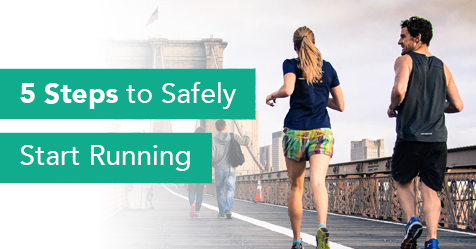
By: Kelley Zimbelman PT, DPT, Claremore, OK Center
Summer is a common time for people to start getting back into shape. Because it is a high calorie burner, running is a popular exercise option.
Unfortunately, discomfort and injuries can lead new participants to give up on running prematurely.
To help decrease the odds of getting injured, we offer these safety tips:
It takes time for your body to adjust to the new demands of running, and increasing distances or speeds too quickly can lead to premature injuries. Most running programs suggest never increasing your mileage by more than 10 percent each week. For example, if you run three miles one week, the most you should run the next week is 3.3 miles. Following this simple rule gives your body time to heal and recover from the demands placed on it the week before, and slowly to adjust to small increases in stress the next week.
Don’t start off running 100 percent of your workout. The best way to begin is to use a circuit between running and walking. As you get more comfortable with running, the interval of walking will decrease, and the amount of running will increase. Here is a good example:
Depending on the structure of your feet and the distribution of forces when running/walking, you may need more support and structure in your shoes. Your feet can be placed in one of three categories while running: pronation, supination or neutral. In simple terms, when running, your foot/ankle complex can roll inward, outward, or stay straight, respectively. The best way to figure out what type of shoe you need is to have a local specialty running store look at how you walk/run. Having the proper shoe will decrease the extra forces that could be placed on your joints and reduce the chances of pain and injury occurring.
One of the hardest aspects of running is having the mental strength not to stop once you get tired or bored. A good way to overcome the mental struggle is to have a friend complete the workout with you. Having someone with whom to talk, to push you toward your goals, and to struggle with you, will help quiet the voice in your head telling you to stop.
Beginning a new exercise regimen can be hard on your body. Before starting to run, visit your primary care physician to ensure that your body can handle these new stresses safely.
